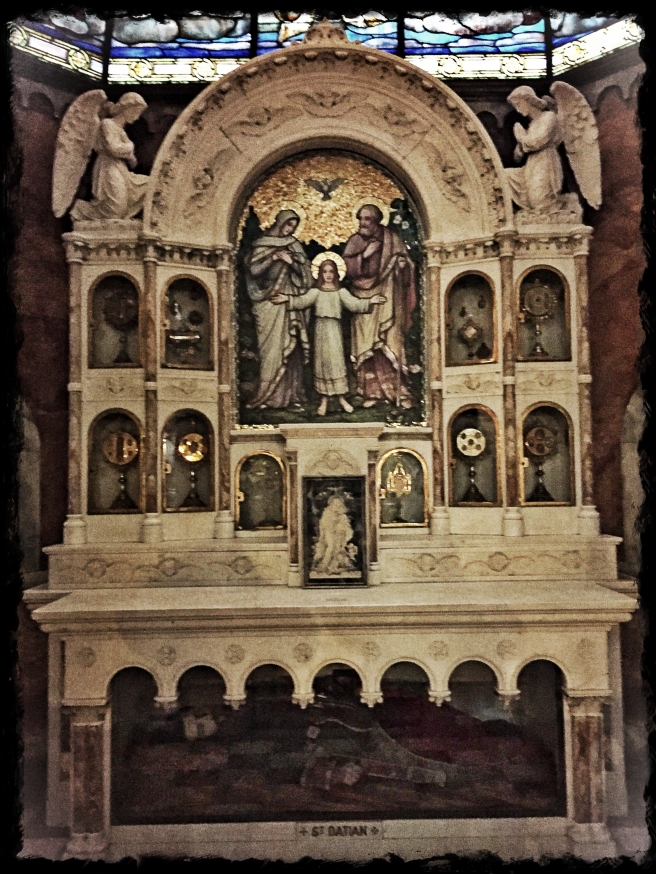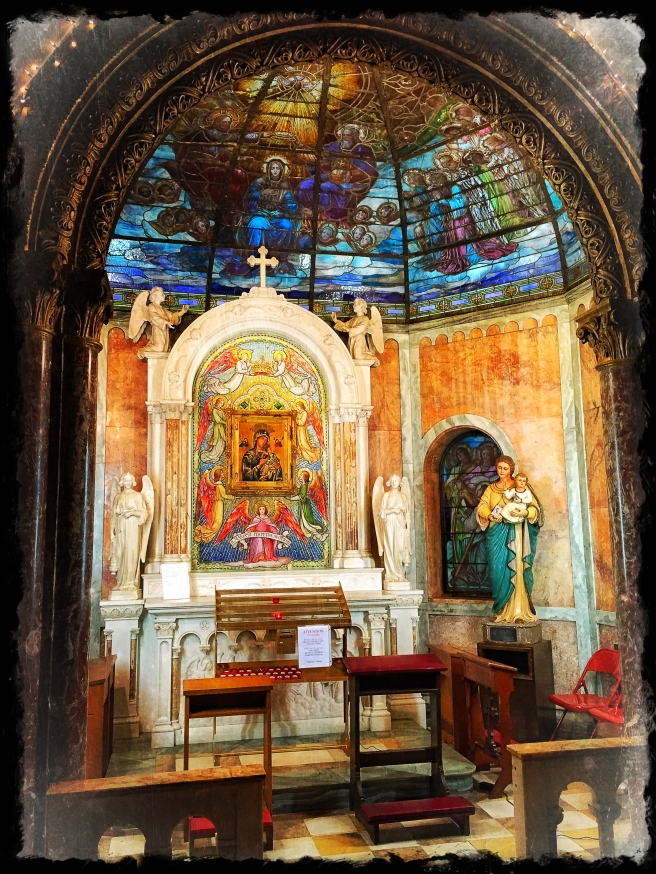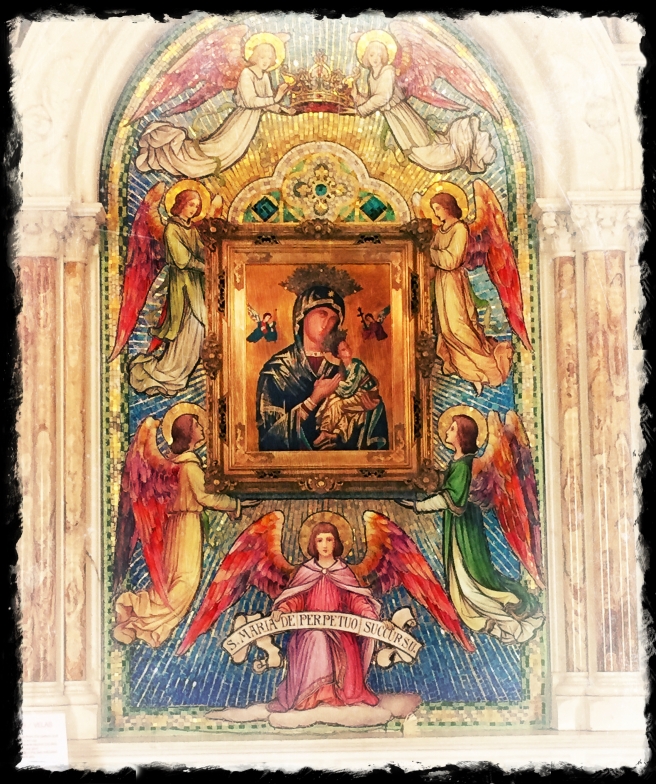
When I was a child I was fascinated by Maria Goretti. Going to Catholic school from Kindergarten on, one learns about the stories of the various saints as a matter of course. They’re vividly presented and the gruesome horrors of many of their martyrologies linger long and deep in the minds of small Catholic children – or at least they did for me. I always found their trials and sacrifices inspiring, humbling, and it all made me want to be a better human being. Now, of course, my faith is very different. I’ve been a polytheist for thirty years, deeply devoted to my Gods, but I still find inspiration in the spiritual valor of certain saints. There are some things that cross traditions and they continue to inspire and we continue to be in a spiritual dialogue of sorts, across religions, across centuries, across a gulf of experience that resolves in the desire to do right in devotion. I continue to learn from them and as far as I’m concerned, in the chaos and brutality of our world, we need all the inspiration we can get. Sometimes encountering something special about a saint that I particularly liked as a child, is like unexpectedly running into an old acquaintance or friend
That’s how it was here. On Friday, one of my students told me that the body of Maria Goretti, the youngest saint ever canonized by the Church was on a special tour of the US. She was in NYC last week but alas I had missed her. My student kindly sent me the tour schedule and I discovered that she would be in Boston on October 5. I was supposed to work at an art gallery that I co-own in Beacon, but my husband, seeing how disappointed I was, offered to work for me so that I could get myself to Boston on Sunday and Monday. I took him up on that and here I am, sitting in a hotel room in Downtown Boston nervous as hell and waiting for tomorrow to arrive.
That’s the thing about this: I am nervous. Last night before I left New York, I was terrified. I thought perhaps it was that I am traveling alone (I usually travel with a companion) but I’ve traveled alone before to places farther afield than Boston! Then I thought it was just a weird type of separation anxiety from my husband but there was no reason for that. I just got back from a month long pilgrimage. We’ve been separated for far more than two days. It was only as I was chatting with him before bed that I realized why I was having such tremendous anxiety: the last time I was in Boston was several years ago, when my mother was still alive. Then it hit me: We were so incredibly close. When she died part of me went with her and I have been pushed to go on these pilgrimages partly to get that part of myself back. It’s almost a type of soul retrieval. I know it’s a type of soul healing. With that epiphany my fear dissipated.
What Maria Goretti has to do with all of that, I’ll probably never know. My mother, like I myself, was a polytheist. Maria Goretti is the patron saint of purity and mercy and perhaps that’s the thing: I need to be clean in my work and far more compassionate with myself than I have ever learned how to be. I told my husband that sometimes I feel very small, like a lost and motherless child. Sometimes I hurt so badly and the world seems very confusing, as though I exist as a child within myself. Maybe I do and as he calmed me, I realize that if that is the case, then there is also the battered carapace of the adult to protect that child and maybe that is all adulthood is: sorting through the layers, learning to live with the scars, and finding joy and adventure in between.
Coming up on the train today, I read a short bio of Maria Goretti. I knew her story from childhood of course but I wanted to refresh my memory and put myself in the right frame of mind. On the surface she was a young, illiterate Italian peasant girl. She was murdered when she was not yet twelve resisting the assault of a man intent on raping her. The bio I read was fairly gruesome, including the charming detail that when the multiple stab wounds (which included perforated lungs and intestines) were treated at the hospital, no anesthetic was used (I’m not quite sure why not). She died defending her virtue. Apparently even at eleven, she was known to be quite devout and after her death, miracles were attributed to her to the point that she is known as a ‘wonder worker.’ Her canonization roughly forty years after her death was the only time in the history of the Church that a saint’s mother was alive and present for the service. I can’t help but wonder what that experience must have been like for her mother. Maria’s story can be found here.
So that is it. I’ll post more tomorrow after I have visited her reliquary. It’s on view all day. For now, even though it’s terribly early (barely seven pm EST!), I’m off to bed. My journey will continue soon enough and I want to be well rested.






